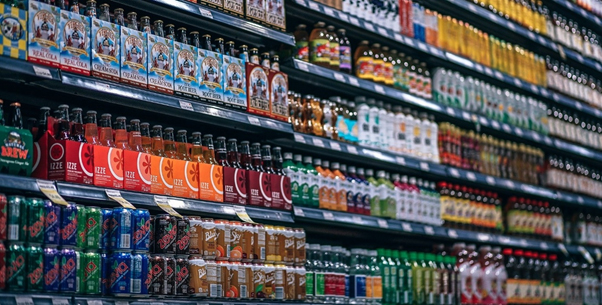The full package deal

Until March 2020, ordering groceries online was mainly a growth segment driven by millennials. There’s nothing like the threat of a deadly airborne virus, a nationwide shutdown of brick-and-mortar retailers and government-imposed lockdowns to incentivize consumers, from baby boomers to Generation Z, to move from occasionally ordering items online to converting their browser search bar into the front door of their supermarket.
The pandemic has accelerated e-commerce growth by approximately 4 to 6 years. Look no further than Amazon for validation. The more nimble smaller shops have pivoted to take advantage of plug-and-play e-commerce platforms like Square and Shopify to stay connected with their current customers.
Consumer Packaged Goods brands in all categories have spent the last decade honing their digital presence and cultivating engagement. Integrated digital marketing and advertising programs have been maturing and proliferating on all platforms. The integration extends from social media platforms to brick-and-mortar aisles, with shopper marketing programs designed to keep a brand top-of-mind and drive sales velocity while building brand affinity.
Engagement with consumers is more critical than ever as consumers reach for their laptops instead of their car keys. While this integrated marketing programming supports folks who still go to the supermarket, it is perfectly suited for the consumer taking advantage of supermarket order and pick-up services. The interaction is more seamless than ever as one can locate the recipe online and add items to a grocery order without leaving their laptop.
The CPG industry is a behemoth, representing nearly 10% of the national GDP. Yet as consumer habits evolve quickly and e-commerce continues to gain market share, CPG companies are facing three serious challenges: expenses (they spend 24% of their revenue on marketing), insufficient data (they have little to no first-party customer data because they sell to consumers through retailers and marketplaces) and competitors (they have growing competition from direct-to-consumer startups and private labels).
By creating new products for DTC brands, categories, segments and themes – especially in emerging markets – CPG companies can become more cost-effective, data-driven and agile. Instead of spending a quarter of their revenue on marketing, they can allocate some of that budget toward lower spend channels. They can build direct relationships with customers, cultivating trust, collecting first-party data and personalizing customer experiences on different brand channels.
E-commerce platforms like Shopify and Squarespace make it simple to promote new products and manage sales and fulfillment without a large investment. Since your company sells directly to customers, you own the relationship you build with them. You can expect your marketing execution to improve with your ability to gather first-party data, as you learn more of your customers’ preferences, behaviors and buying habits. Most importantly, you have permission to use their customer data, giving you opportunities to offer one-to-one personalization, research new product ideas and enhance customer experience.
Brands put a lot of consideration into their packaging. The packaging is designed to help products stand apart, convey branding and display information. As CPG brands begin looking into introducing IoT elements into their packages, it behoves them to add cues designed to induce habits. This is something we haven’t seen much of in the market yet, but something we can expect to see a lot of in the next year or two. We can also expect that brands will introduce more on-package rewards in which consumers scan a product to earn points toward discounted or related products as well as an increase in contests and giveaways.
Brands can also use packaging to connect users into larger, connected social groups. In this instance, being part of the group is the reward that the cue induces. Through user-directed scans or packaging that syncs directly to a user’s phone, consumers can join private social networks, where the users share pictures of themselves using the product, participate in exclusive events or take advantage of exclusive offers. This social adaptation will find great CPG brands mimicking the effort.
TMP’s role
Here at TMP, we support the customer journey, keeping the specific brand in mind. We partner with them through multiple channels that help in customer acquisition and growth, and ultimately result in retaining the customer, making them brand advocates. We use chat, chatbot, IVR and live agents to address every single need they might have, from order details to tech support.
We focus on improving customer engagement by reducing costs and increasing customer revenue, helping our clients get a better share of the market. We provide customer support 24/7, answering all queries and resolving all complaints, besides promotion of special offers and new products. We gently guide customers on every step of the relationship cycle. Ultimately, a happy customer means a happy client!